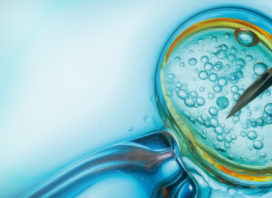TESTING THE COUPLE

For women
Basic tests for women (examples):
- Cycle day 2-3 FSH and estradiol; transvaginal ultrasound
- Anti-Mullerian hormone (AMH)
- Prolactin
- TSH
- Hysterosalpingography (HSG)
- Specialized tests for women:
- Hysterosonography or hysteroscopy
- Laparoscopic examination (intra-pelvic operation)
- Fragile X
- Karyotyping (Chromosome test done on a blood sample)
- Free testosterone, DHCA, DCHA-S, 17-hydroxy-progesterone, fasting blood sugar and insulin (for patients with polycystic ovarian syndrome)
Hormone testing to assess egg quality
Three simple blood tests can check hormone levels and reveal more information about egg quality.
These tests may also help diagnose infertility in younger women, who ordinarily would not be experiencing reduced ovarian reserve or poor egg quality:
- Basic FSH:
FSH (follicle stimulating hormone) is the main hormone involved in producing mature eggs in the ovaries.
If this test reveals excessive levels of FSH in the body, it is a signal that the brain is trying to boost poorly performing ovaries into action.
(In other words, the ovaries may need extra help to make eggs.)
- Estradiol:
Estradiol is the most important form of estrogen found in the body, and it is responsible for maintaining healthy eggs in a woman’s ovaries, as well as for facilitating a healthy pregnancy.
If this test shows high levels of estradiol, it indicates a problem with egg numbers and/or quality. It is evaluated together with FSH.
- Anti-Mullerian hormone (AMH):
AMH is a blood test that directly measures the ovarian reserve.
AMH is produced directly by early stage ovarian follicles.
High levels (over 4) are favorable, while low levels (less than 1.0) indicating a decreased ovarian reserve.
AMH may be the best measure of the menopausal transition and ovarian age.
It may also be useful in predicting ovarian hyperstimulation syndrome, the effects of chemotherapy, and in determining the treatment of PCOS.
AMH seems to be a superior predictor of ovarian response compared to other markers, including age, and cycle day 3 FSH and estradiol.
It offers similar predictive value compared to AFC.
AMH may be performed at any point of the menstrual cycle.
Some of these preliminary fertility tests can be performed by your primary care physician or gynecologist before seeing fertility specialists.
Ultrasound evaluation to assess egg quantity
Antral follicle count:
One of the first tests that is typically performed at an initial patient visit at REA Fertility Unit is a transvaginal ultrasound.
This ultrasound allows the physician to evaluate the uterus and uterine cavity, and ovaries.
Especially if done just prior to ovulation, the ultrasound can be very informative in making sure there are no fibroids or endometrial polyps affecting the uterine lining.
Very importantly, the physician can assess the number of small follicles in the ovaries.
Ideally, about 10-20 total follicles should be visualized in the two ovaries.
If the follicle count is much lower, this may be an indication of declining ovarian reserve.
For men
Basic tests for men (examples):
- Spermogram
Specialized tests for men (examples):
- Y-Chromosome micro-deletion DNA analysis (blood test)
- Sperm Chromatin Separation Assay (SCSA) for DNA fragmentation (sperm test)
Hormonal tests (examples):
- FSH, LH, testosterone, prolactin, estradiol (blood tests done when severe male infertility is found)

















